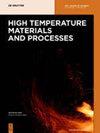基于散热器最佳结构的LED基Cu2O沉积物的热管理
IF 1.5
4区 材料科学
Q4 MATERIALS SCIENCE, MULTIDISCIPLINARY
引用次数: 0
摘要
摘要本报告使用基于优化设计的散热器结构和喷涂的氧化亚铜(Cu2O)涂层研究了发光二极管(LED)的热性能。创建了具有各种散热结构的18块铝板的正交阵列。LED封装的最佳结温是通过使用基于田口方法的散热结构的信噪比(S/N)以及散热涂层来确定的。根据方差分析,可以得出影响结温度的最重要因素是凹槽的深度、孔的布局、LED的布局和Cu块的数量。这些显著因素约占实验变化的91.06%。结果表明,通过优化基于散热涂层的LED散热器结构,结温效率提高了23.88%,增益为1.30 dB对应于9.67%的方差减少,这表明通过最佳设置改进了1.162倍的方差,显示出良好的再现性。总体而言,该涂层是基于对具有良好传热能力的散热器结构的优化设计,可以很好地解决LED的散热问题,并进一步指导LED的未来发展。本文章由计算机程序翻译,如有差异,请以英文原文为准。
Heat management of LED-based Cu2O deposits on the optimal structure of heat sink
Abstract This report investigates the thermal performance of light-emitting diodes (LEDs) using a heat sink structure based on an optimized design and a sprayed cuprous oxide (Cu2O) coating. An orthogonal array of 18 aluminum plates with various heat-dissipated structures was created. The optimal junction temperature of the LED package is determined by using the signal-to-noise ratio (S/N) of the heat-dissipated structure based on Taguchi’s method as well as the heat dissipation coating. According to the analysis of variance, the most important factors that influence the junction temperature can be obtained as the depth of groove, the layout of holes, the layout of LEDs, and the number of Cu block. These significant factors constituted approximately 91.06% of the variation in the experiment. The results show that by optimizing the structure of the LED heat sink based on the heat-dissipated coating, the efficiency of the junction temperature is increased by 23.88%. Also, a gain of 1.30 dB corresponds to a 9.67% reduction in variance, which indicates the improvement through the optimal setting by 1.162 times of variance, showing good reproducibility. Overall, the coating is based on the optimized design of the structure of the heat sink that has good heat transfer capability, which can provide a good solution to the heat-dissipated problem of LED and further give guidance to the future development of LED.
求助全文
通过发布文献求助,成功后即可免费获取论文全文。
去求助
来源期刊

High Temperature Materials and Processes
工程技术-材料科学:综合
CiteScore
2.50
自引率
0.00%
发文量
42
审稿时长
3.9 months
期刊介绍:
High Temperature Materials and Processes offers an international publication forum for new ideas, insights and results related to high-temperature materials and processes in science and technology. The journal publishes original research papers and short communications addressing topics at the forefront of high-temperature materials research including processing of various materials at high temperatures. Occasionally, reviews of a specific topic are included. The journal also publishes special issues featuring ongoing research programs as well as symposia of high-temperature materials and processes, and other related research activities.
Emphasis is placed on the multi-disciplinary nature of high-temperature materials and processes for various materials in a variety of states. Such a nature of the journal will help readers who wish to become acquainted with related subjects by obtaining information of various aspects of high-temperature materials research. The increasing spread of information on these subjects will also help to shed light on relevant topics of high-temperature materials and processes outside of readers’ own core specialties.
 求助内容:
求助内容: 应助结果提醒方式:
应助结果提醒方式:


